1 min read
Dark Globule and Stellar Jet in the Carina Nebula

The tadpole-looking feature in the center of this image is a nodule of cold hydrogen gas laced with dust. The image offers circumstantial evidence that a young star is being born inside the placental cloud. The diagonal feature may be caused by twin jets of gas blasting away from the hidden star. They are slamming into neighboring gas to create a pair of bow shocks on either side of the globule. The twisted "tail" on the back of the globule may be evidence for a wobbling jet of material being blasted from the suspected star.
This image is from a mosaic of the Carina Nebula assembled from 48 frames taken with the Hubble Space Telescope's Advanced Camera for Surveys.
About the Object
- ConstellationConstellationOne of 88 recognized regions of the celestial sphere in which the object appears.Carina
- DistanceDistanceThe physical distance from Earth to the astronomical object. Distances within our solar system are usually measured in Astronomical Units (AU). Distances between stars are usually measured in light-years. Interstellar distances can also be measured in parsecs.Approximately 7,500 light-years (2,300 parsecs)
About the Data
- Data DescriptionData DescriptionProposal: A description of the observations, their scientific justification, and the links to the data available in the science archive.
Science Team: The astronomers who planned the observations and analyzed the data. "PI" refers to the Principal Investigator.This color image combines many exposures from Hubble Space Telescope's Advanced Camera for Surveys (ACS)* and NOAO/AURA/NSF Cerro-Tololo Interamerican Observatory's (CTIO) 4m Blanco Telescope and MOSAIC2 camera.
The ACS data was from the HST proposal 10241: N. Smith (University of California, Berkeley), J. Bally (University of Colorado at Boulder), N. Walborn (STScI), and J. Morse (NASA/GSFC).
*A small area of the Hubble ACS image that was saturated around the brightest star in the field, Eta Carinae, was replaced with images from previous shorter exposures from Hubble's Wide Field Planetary Camera 2.
The CTIO observing team includes: N. Smith (University of California, Berkeley), J. Bally (University of Colorado at Boulder), and J. Walawender (Institute for Astronomy/University of Hawaii).
*A small area of the Hubble ACS image that was saturated around the brightest star in the field, Eta Carinae, was replaced with images from previous shorter exposures from Hubble's Wide Field Planetary Camera 2. - InstrumentInstrumentThe science instrument used to produce the data.HST>ACS, CTIO>4m Blanco Telescope and CTIO>MOSAIC2
- Exposure DatesExposure DatesThe date(s) that the telescope made its observations and the total exposure time.March - July 2005 (HST), December 2001 - March 2003 (CTIO)
- FiltersFiltersThe camera filters that were used in the science observations.ACS: F658N (H-alpha+[N II])CTIO: ([O III] 501nm), (H-alpha+[N II] 658nm) and ([S II] 672+673nm)
- Object NameObject NameA name or catalog number that astronomers use to identify an astronomical object.Dark Globula in NGC 3372, Carina Nebula
- Object DescriptionObject DescriptionThe type of astronomical object.Dark Globula, Stellar Jet, Emission Nebula
- Release DateApril 24, 2007
- Science ReleaseThe Carina Nebula: Star Birth in the Extreme
- Credit
Related Images & Videos

The Carina Nebula: Star Birth in the Extreme
In celebration of the 17th anniversary of the launch and deployment of NASA's Hubble Space Telescope, a team of astronomers is releasing one of the largest panoramic images ever taken with Hubble's cameras. It is a 50-light-year-wide view of the central region of the Carina...

Grayscale Image of the Carina Nebula: Star Birth in the Extreme
In celebration of the 17th anniversary of the launch and deployment of NASA's Hubble Space Telescope, a team of astronomers is releasing one of the largest panoramic images ever taken with Hubble's cameras. It is a 50-light-year-wide view of the central region of the Carina...
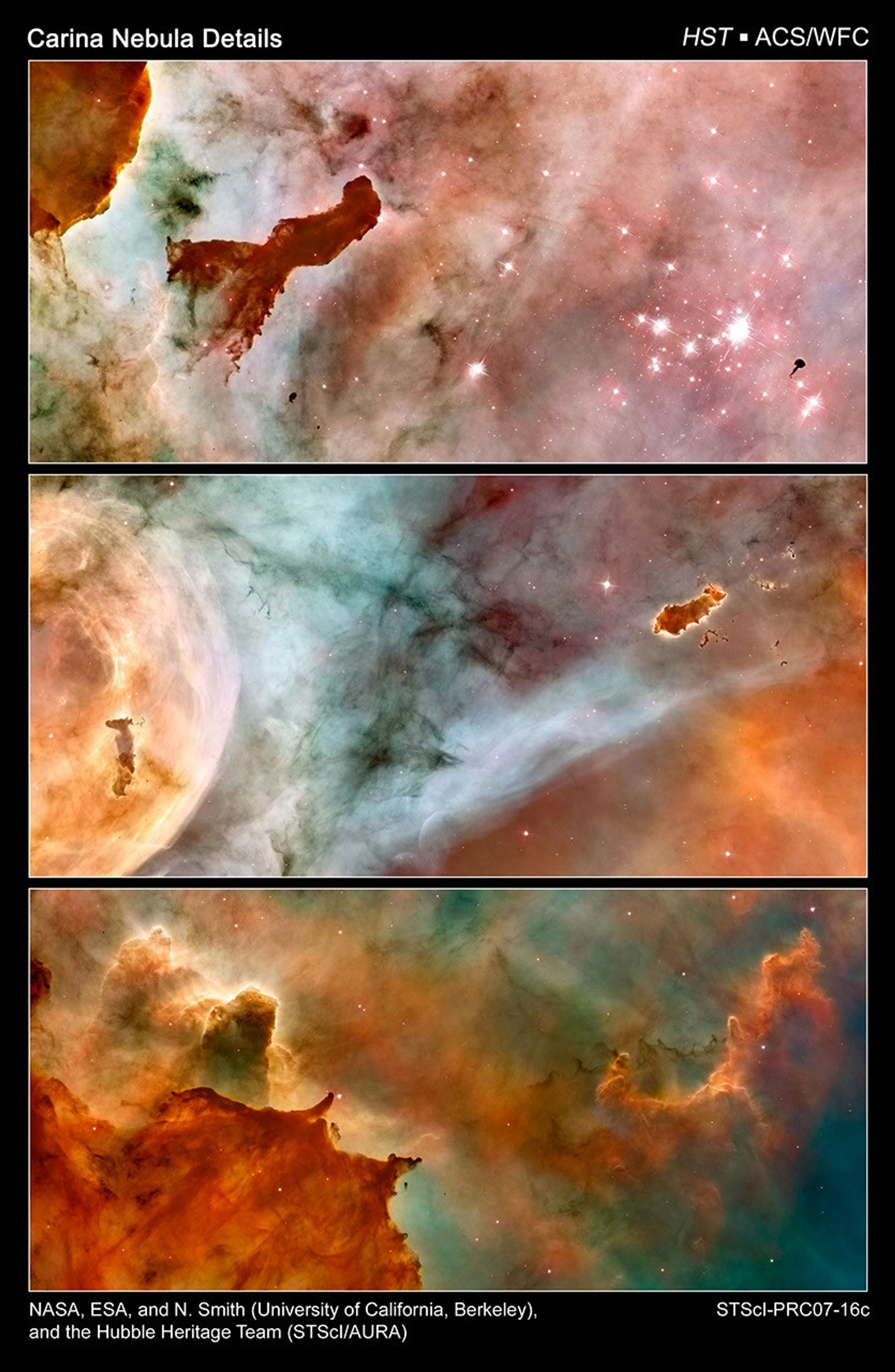
Carina Nebula Details
This Hubble Space Telescope view of the central region of the Carina Nebula reveals a violent maelstrom of star birth. The fantasy-like landscape of the nebula is sculpted by the intense pressure of starlight from monster stars and their accompanying star clusters, as well as...

Carina Nebula Details: Pillar
An approximately one-light-year tall "pillar" of cold hydrogen towers above the wall of the molecular cloud. The 2.5-million-year-old star cluster called Trumpler 14 appears at the right side of the image. A small nugget of cold molecular hydrogen, called a Bok globule, is...

Carina Nebula Details: The Caterpillar
A Bok globule nicknamed the "caterpillar" appears at the right. Its glowing edge indicates that it is being photoionized by the hottest stars in the cluster. It has been hypothesized that stars may form inside such dusty cocoons. The top of the Keyhole Nebula, the most prominent...

Carina Nebula Details: Great Clouds
These great clouds of cold hydrogen resemble summer afternoon thunderheads. They tower above the surface of a molecular cloud on the edge of the nebula. So-called "elephant trunk" pillars resist being heated and eaten away by blistering ultraviolet radiation from the nebula's...
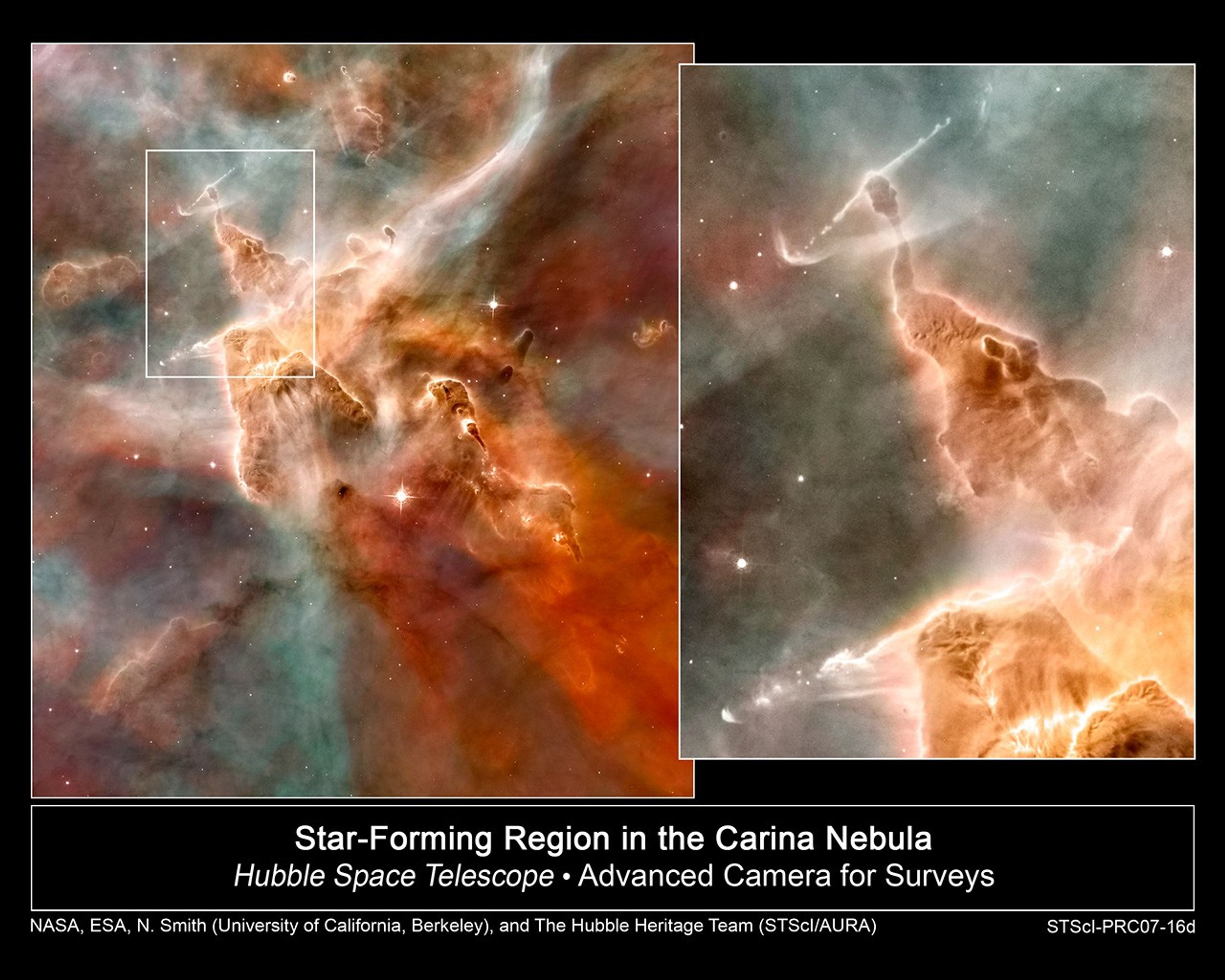
Star-Forming Region in the Carina Nebula
[Left] - A towering "mountain" of cold hydrogen gas laced with dust is the site of new star formation in the Carina Nebula. The great gas pillar is being eroded by the ultraviolet radiation from the hottest newborn stars in the nebula. [Right] - A close-up look at the peak of...

Star-Forming Region in the Carina Nebula: Detail 2
A close-up look at the peak of one of these "pillars of creation" reveals unequivocal evidence that stars are being born inside the columns. A pencil-like streamer of gas shoots out in both directions from the pillar and plows into surrounding gas like a fire hose hitting a wall...
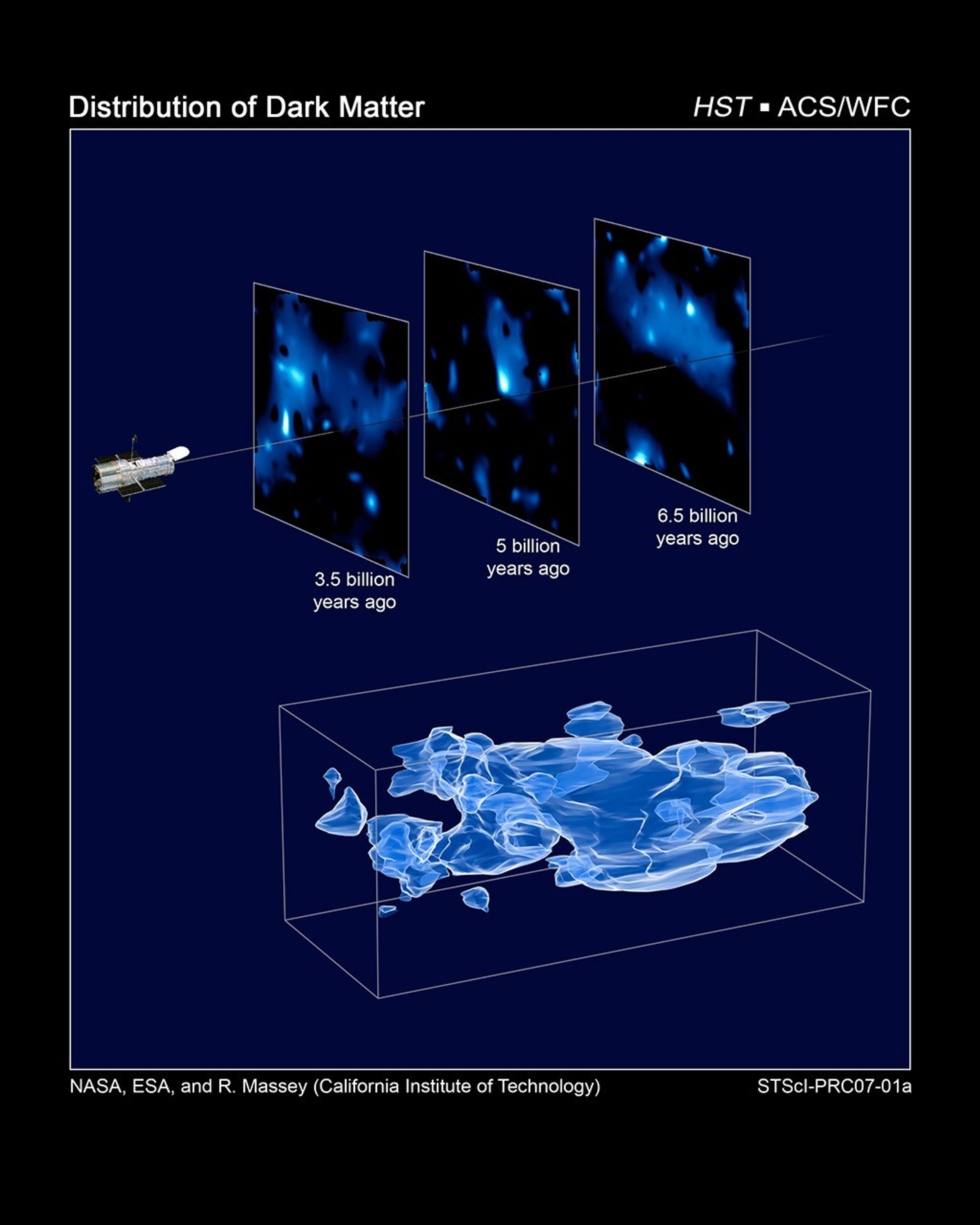
Three-Dimensional Distribution of Dark Matter in the Universe (with 3 slices of time)
This three-dimensional map offers a first look at the web-like large-scale distribution of dark matter, an invisible form of matter that accounts for most of the universe's mass. This milestone takes astronomers from inference to direct observation of dark matter's influence in...

Artist's Impression of a Transiting Exoplanet
This is an artist's impression of a Jupiter-sized planet passing in front of its parent star. Such events are called transits. When the planet transits the star, the star's apparent brightness drops by a few percent for a short period. Through this technique, astronomers can use...

A Gallery of 'Tadpole Galaxies'
These postage-stamp-size images reveal 36 young galaxies caught in the act of merging with other galaxies. These galaxies appear as they existed many billions of years ago. Astronomers have dubbed them "tadpole galaxies" because of their distinct knot-and-tail shapes, which...
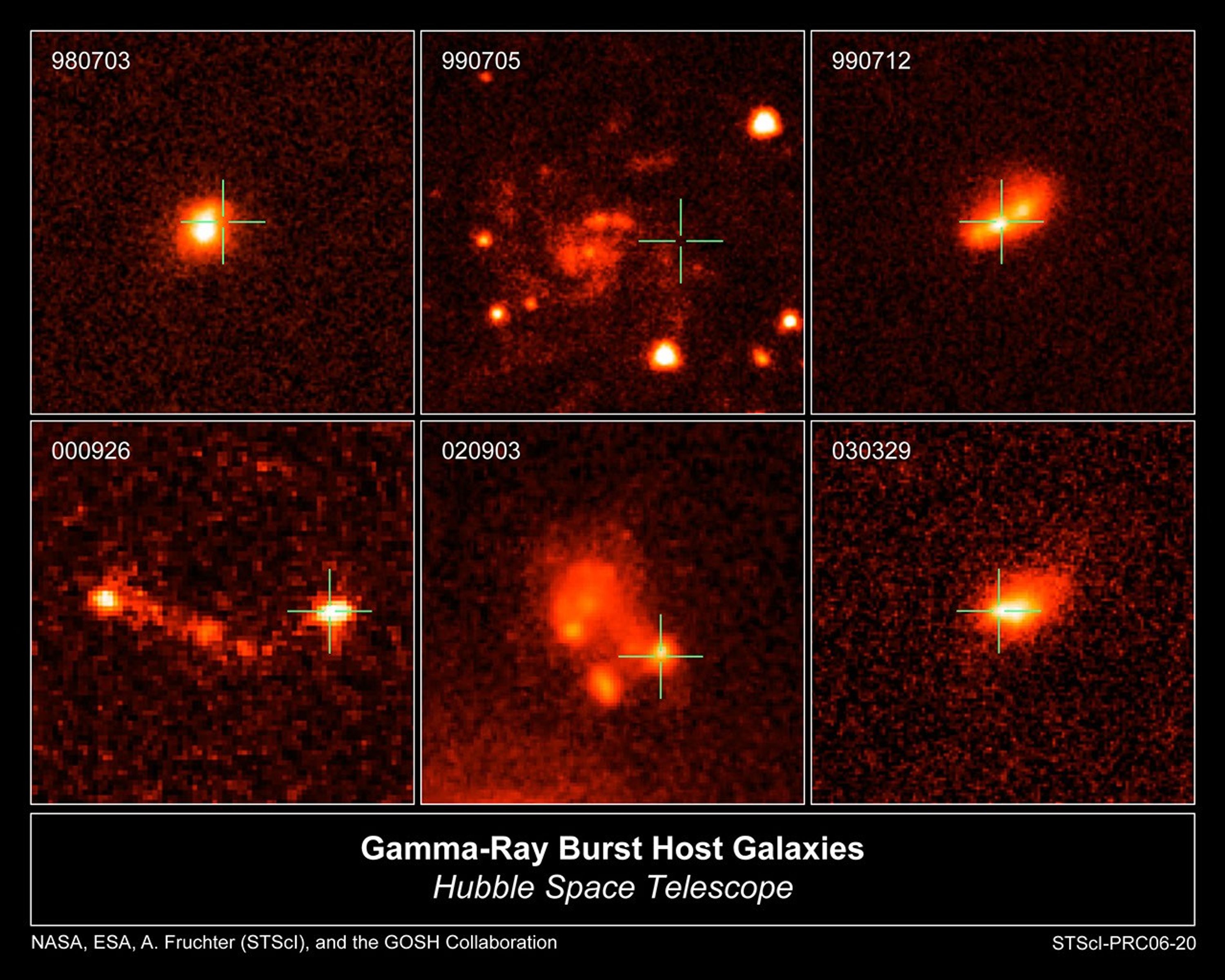
The Host Galaxies of Gamma-ray Bursts
This is a sampling of the host galaxies of long-duration gamma-ray bursts taken by NASA's Hubble Space Telescope. Gamma-ray bursts are powerful flashes of high-energy radiation that arise from some supernovae, the explosive deaths of extremely massive stars. Long-duration bursts...

Artist's Concept of Nearest Exoplanet to Our Solar System
This is an artist's concept of a Jupiter-mass planet orbiting the nearby star Epsilon Eridani. Located 10.5 light-years away, it is the closest known exoplanet to our solar system. The planet is in an elliptical orbit that carries it as close to the star as Earth is from the...

A String of 'Cosmic Pearls' Surrounds an Exploding Star
Two decades ago, astronomers spotted one of the brightest exploding stars in more than 400 years. Since that first sighting, the doomed star, called Supernova 1987A, has continued to fascinate astronomers with its spectacular light show. NASA's Hubble Space Telescope is one of...

Looking 'Underneath' Quasar HE0450-2958
This image shows the quasar HE0450-2958 after advanced image processing known as MCS-deconvolution. Thanks to this technique, it is possible to remove the brilliant glare from the quasar itself. The most interesting feature in the image is the nearly total absence of starlight...

Photo Illustration of Comet P/Shoemaker-Levy 9 and Planet Jupiter
This is a composite photo, assembled from separate images of Jupiter and Comet P/Shoemaker-Levy 9, as imaged by the Wide Field & Planetary Camera-2 (WFPC-2), aboard. NASA's Hubble Space Telescope (HST). Jupiter was imaged on May 18, 1 994, when the giant planet was at a distance...

Pluto and Its Moons: Charon, Nix, and Hydra
A pair of small moons that NASA's Hubble Space Telescope discovered orbiting Pluto now have official names: Nix and Hydra. Photographed by Hubble in 2005, Nix and Hydra are roughly 5,000 times fainter than Pluto and are about two to three times farther from Pluto than its large...
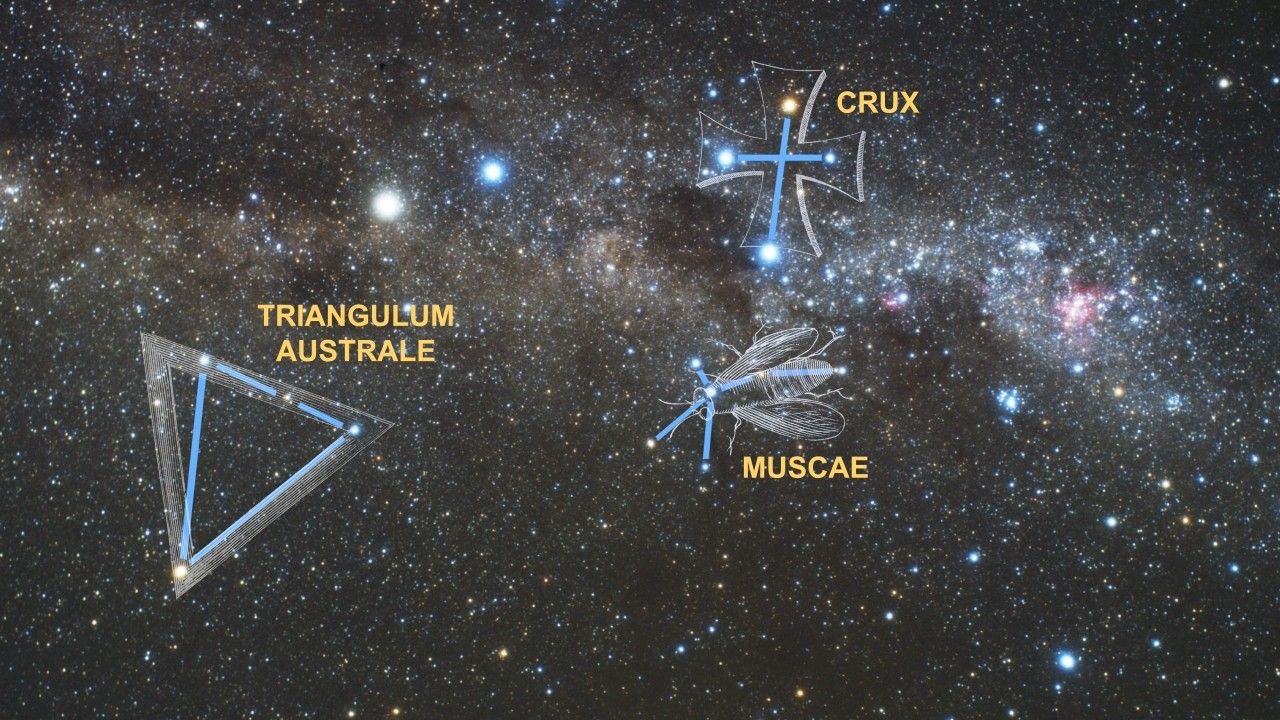
Carina Nebula: Star Birth in the Extreme (Color)
In celebration of the 17th anniversary of the launch and deployment of NASA's Hubble Space Telescope, a team of astronomers is releasing one of the largest panoramic images ever taken with Hubble's Advanced Camera for Surveys. It is a 50-light-year- wide view of the central...
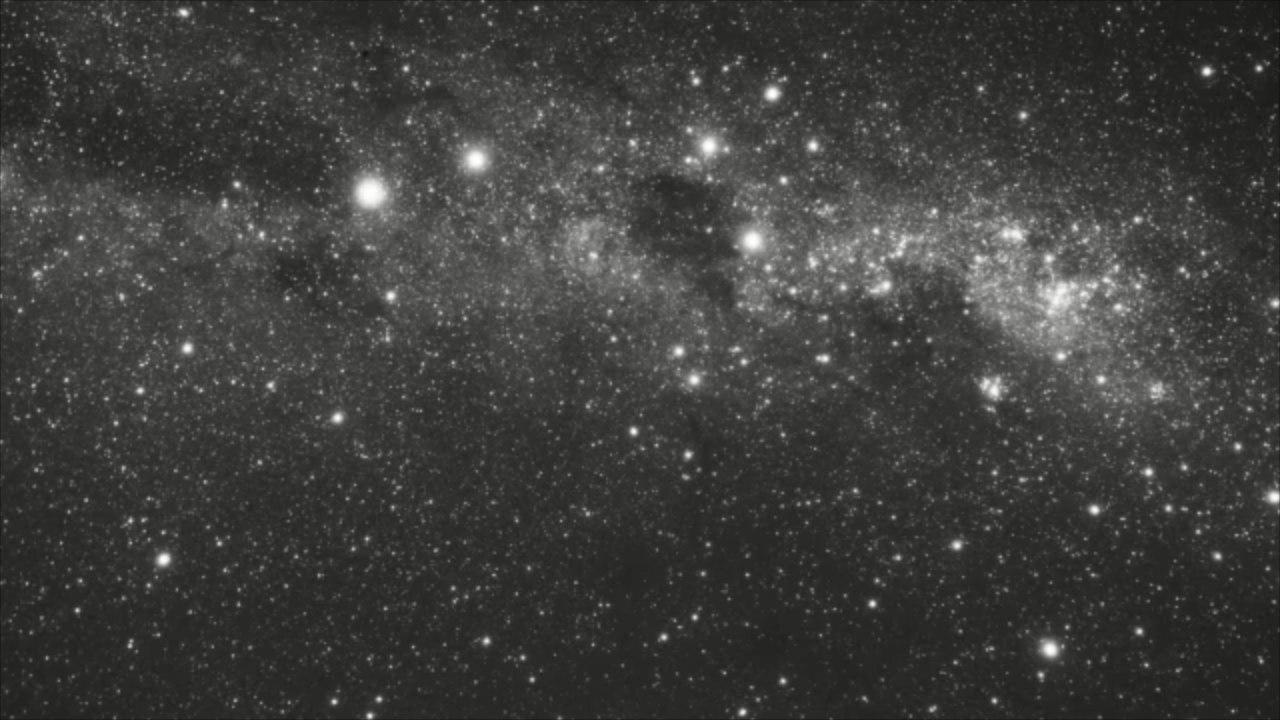
Carina Nebula: Star Birth in the Extreme (Black and White)
In celebration of the 17th anniversary of the launch and deployment of NASA's Hubble Space Telescope, a team of astronomers is releasing one of the largest panoramic images ever taken with Hubble's Advanced Camera for Surveys. It is a 50-light-year- wide view of the central...
Share
Details
Claire Andreoli
NASA’s Goddard Space Flight Center
Greenbelt, Maryland
claire.andreoli@nasa.gov






































